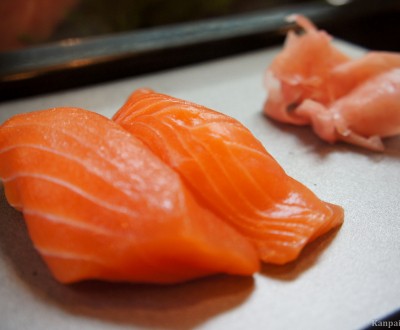Sushi Etiquette
How to Eat Sushi in Japan: Hands 👐🏼 or Chopsticks 🥢
Sushi 🍣 is a well-known culinary feature of Japan and has long been exported throughout the world. Since the beginning of the 2000s, when sushi’s popularity peaked, it became a mainstream dish, often twisted to fit local tastes, especially in Western countries, and it has become a popular dish for food delivery.
The main sushi types in Japan
Outside Japan, sushi is often considered a daily dish, but this is a widespread mistake. Sushi is in fact part of quite expensive courses that people don’t eat on an everyday basis, as opposed to ramen 🍜 noodles, for example. There are two types of sushi restaurants:
- The traditional restaurants, the most expensive, where the chef (板前 itamae) prepares individual sushi plates in front of the customers, following their orders or the restaurant’s menu
- The more affordable kaiten-zushi (回転寿し or conveyor belt sushi), where the customers help themselves to sushi plates on a conveyor belt stretching out from the kitchen
In Western countries, the term "sushi" 寿司 is limited to a particular form of rice combined with a raw fish slice. However, in Japan, it is a generic term that it is used as a suffix to name the following delicacies:
- Nigiri-zushi 握り寿司 (grasped sushi) is the sushi as we know it in Western countries: A slice of raw fish put on a small portion of rice
- Maki-zushi 巻き寿司 (rolled sushi) is made of fish, rice and possibly other ingredients, which are rolled in a sheet of nori seaweed
- Chirashi-zushi ちらし寿司 (scattered sushi) is a bowl of rice covered with thin raw fish slices, or sashimi.
Below are some sushi manner tips, to eat sushi "à la" Japanese. They might prove useful during future trips to Japan.
The Do’s at a Japanese sushi restaurant
- Use the hot towel (御絞り oshibori) to clean your hands before eating
- Choose each plate before touching it and take it without moving from your seat, or
- Order your sushi directly from the chef
- Order everything but sushi (drinks, for example) from the waiter
- Use either your fingers or chopsticks to eat, it does not matter
- Delicately dip the fish side (not the rice) of the nigiri-zushi into the soy sauce (醤油 shôyu)
- Place the fish side of the nigiri on the tongue to fully enjoy its taste (and particularly the umami 旨味)
- Eat each piece in a single mouthful
- Use the other side of the chopsticks to help yourself in a shared dish
- Empty the plates; Don’t even leave a grain of rice
- In a kaiten-zushi, pile up the empty plates, as they will be used to calculate the bill
- End your meal with a sweet sushi, such as the omelet sushi, that is similar to a dessert,
- Align the chopsticks horizontally on a plate when you are finished
The Don’ts of eating sushi
- Wear perfume to go to the restaurant, as the smell will affect the tasting experience
- Bite sushi and eat it in several mouthfuls
- Use cutlery
- Drown sushi in the sauce
- Add wasabi to the nigiri, as the sushi chef will have already put some between the raw fish slice and the rice
- Hesitate when choosing a plate or leave your seat to take a plate
- Take a single piece of sushi off a plate on the conveyor belt
- Have too many plates to eat from at the same time
- Put a plate (whether empty or not) back onto the conveyor belt

